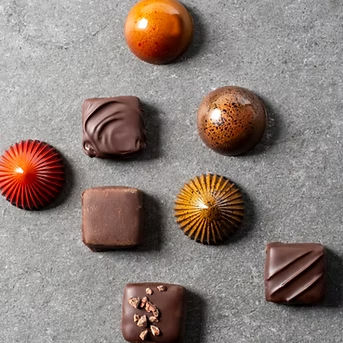The Fascinating Journey of Chocolate: From Cacao to Treat
- Co-Lab Team
- Jan 27
- 3 min read
Updated: Feb 21
Chocolate is one of the most beloved treats worldwide. But have you ever wondered what makes it so special? The journey from cacao bean to chocolate bar is a captivating blend of history, science, and craftsmanship. Let’s explore the complex process that gives every bite its unique charm.
A Journey Through History
Chocolate’s story starts in ancient Mesoamerica. The Olmecs, Mayans, and Aztecs viewed cacao as a sacred gift. They consumed it as a drink, mixing it with spices. It was used in religious ceremonies and even served as currency.

When cacao reached Europe in the 1500s, two ingredients transformed it into the sweet treat we know today: sugar and milk. By the 18th century, chocolate emerged as a fashionable drink among nobility, especially after the discovery of the Americas.

The rich history of chocolate reflects not just its deliciousness but also its cultural significance. It has evolved with society and changing tastes over the centuries.
Understanding Cacao Varieties
Not all chocolate is created equal. The flavor, texture, and overall quality hinge on the type of cacao bean used. There are four primary cacao varieties:

Criollo
Rare and refined flavor
Features floral and fruity notes
Sensitive to environmental conditions and diseases
Makes up only about 5% of worldwide cacao production
Forastero
Robust and bold flavor
Features earthy and chocolatey notes
Suited to various growing conditions, more disease-resistant and easier to cultivate
Nearly 80% of global production
Trinitario
A hybrid of Criollo and Forastero
Balanced and complex flavor
May still be prone to some issues that affect Criollo
Nacional
Unique fine flavor
Nacional cacao has a rich legacy in South America, specifically in Ecuador
The flavor profiles of these beans are influenced by several factors, including genetics, climate, and farming practices.
From Cacao Pod to Chocolate Bar
Turning cacao into chocolate involves a detailed process. Several crucial steps are essential to ensure quality.

This process, from bean to bar, requires careful attention. Each step must meet quality standards for taste, texture, and presentation. Crucial stages such as fermentation, roasting, and conching significantly impact the flavor profile and the overall quality of the chocolate.
Fermentation
After harvesting, cacao beans undergo fermentation. This process typically lasts several days and allows the beans to develop flavor. Lactobacillus bacteria and yeast play vital roles in this stage. Enzymatic reactions produce acids that enhance the chocolate's complexity.
Drying
Next, the beans are dried. This step prevents mold growth and prepares them for transport. Proper drying ensures the beans retain their rich flavors.
Roasting
Roasting is where the magic truly begins. Each variety requires specific roasting times and temperatures. This step brings out the chocolate aromas and flavors that we associate with delightful treats. The Maillard reaction occurs during this stage, creating complex flavors.
Grinding and Conching
Finally, the beans are ground to create chocolate liquor. This step blends the cocoa solids and cocoa butter. Conching further refines the mixture, smoothing out the texture and enhancing the flavor. This process can take hours or even days!
As you can see, the journey from cacao bean to chocolate bar is complex. Every step influences the character of the final product.
Final Thoughts
Understanding chocolate requires appreciating its lengthy journey. From its historical significance to the intricate processes involved in its creation, chocolate remains a fascinating subject of study. Whether you're a pastry chef, chocolatier, or simply passionate about chocolate, mastering these techniques can elevate your craft.
If you want to deepen your knowledge and skills, consider creating your own chocolate from scratch. Join us for Co-Lab’s Chocolate Foundations class, where you’ll learn the art of chocolate making.
Upcoming Class Details
Masterclass: 2-day course
Instructors: Cyril & Erik
Level: 1
Date: February 26th, 27th - 2025
Don’t miss this opportunity to enhance your chocolate-making skills!
 | Chocolate Foundations2-day Masterclass Cyril & Erik Level 1 February 26th, 27th - 2025 |
|---|





Comments